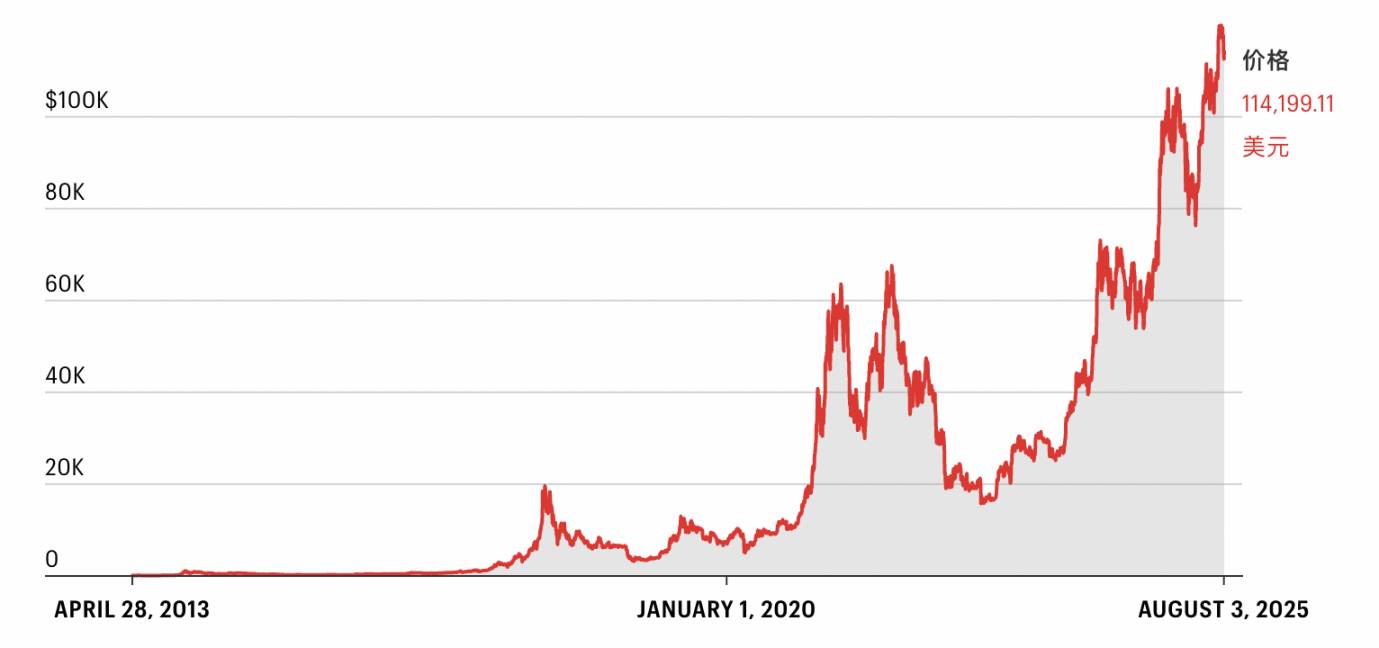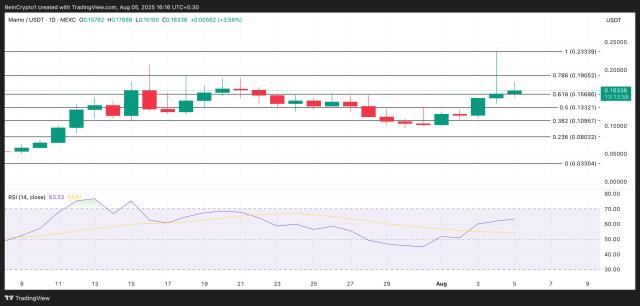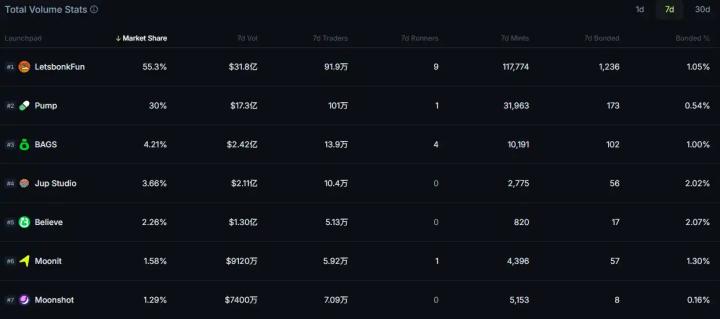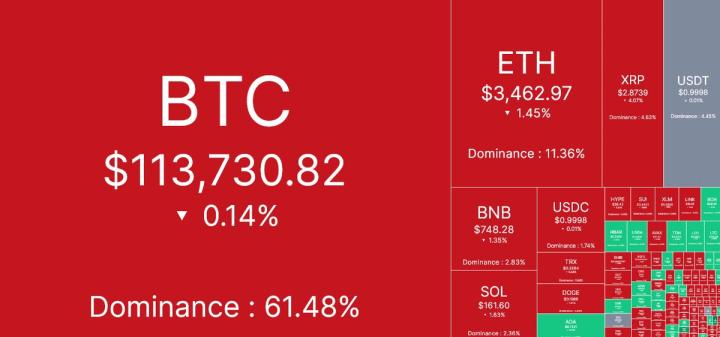In 2016, Dan Morehead embarked on a global tour to spread the "gospel" of Bit. This former Goldman Sachs and Tiger Management trader had been "completely conquered" by Bit years ago, firmly believing it would reshape the global economy. His faith in this currency was so strong that he came out of semi-retirement and transformed his hedge fund, Pantera Capital, into one of the world's first Bit funds.
This new business was launched in 2013, with initial momentum supported by two Princeton alumni, Pete Briger and Mike Novogratz, both from the private equity giant Fortress Investment Group. The three watched with joy as Bit, initially purchased at $65, soared to over $1,000 by year-end. But then disaster struck when hackers raided Mt. Gox, the main exchange for emerging cryptocurrencies, causing Bit's price to plummet by 85%. "People would say, 'Aren't you doing that dead Bit?'" Morehead recalled. "It's still alive!" he would always respond.
During the 2016 Bit lecture tour, Morehead arranged 170 meetings. Each time he entered a potential investor's office, he would spend an hour arguing why this new asset was the most enticing opportunity. The result was: he only raised $1 million for the struggling fund. Worse, Morehead's own speaking fees totaled around $17,000. "I earned $100 per meeting, just to convince people to buy Bit," he told Fortune magazine.
Less than a decade later, with Bit's price approaching $120,000, Morehead's early difficult years have become part of a founder's legend - comparable to Steve Jobs and Steve Wozniak tinkering in Jobs' parents' garage, or Warren Buffett and Charlie Munger discussing stock trading insights over an Omaha dinner.
Today, Pantera manages over $4 billion across various crypto funds, holding positions in Bit, Ethereum, and other digital assets, as well as investments in projects like Circle (going public in June) and Bitstamp (acquired by Robinhood for $200 million earlier this year). In the competitive crypto venture capital field, the company's uniqueness lies in its "pioneer" status: a renowned bridge between conservative traditional finance and the once rebellious crypto industry. And its core figure, Morehead, is a low-key pragmatist in an industry filled with legendary characters.
"I'm stubborn and completely believe (Bit) will change the world," Morehead told Fortune, "so I kept persisting."
Bit's Wild Journey

Princeton's 'Gang'
In an era before Wall Street had penetrated the blockchain industry, Morehead seemed out of place in the chaotic early cryptocurrency world. A former Princeton University dual-sport athlete (rugby and heavyweight rowing), he still retains the broad shoulders and square jawline of his youth. This was quite different from the skinny, eccentric types constantly lurking in online forums. In contrast, Morehead came from traditional finance and still prefers wearing suit jackets.
Before encountering Bit, Morehead already had a long trading career. After working at Goldman Sachs and Tiger Fund, he founded his own hedge fund Pantera, which collapsed during the 2008 financial crisis. Around that time, a mysterious figure named Satoshi Nakamoto published a white paper introducing Bit to the world.
In 2011, Morehead first heard about Bit from his brother, vaguely knowing that his Princeton classmate Gavin Andresen ran a website where users could get 5 Bits by solving a captcha (currently worth about $575,000). But he didn't pay much attention until years later when another classmate, Briger, invited him for coffee to discuss cryptocurrencies at Fortress Investment Group's San Francisco office, with Novogratz joining remotely. "From then on, I was captivated by Bit," Morehead said.
The tech world is known for its so-called "gangs", like the PayPal gang that later dominated the next generation of startups. In the crypto realm, the "gang" didn't come from a company, but from a university: Princeton nurtured some of the industry's most influential projects.
Briger and Novogratz were key supporters of Pantera, with Morehead even moving into an unused space in Fortress Investment's San Francisco office. Briger still maintains behind-the-scenes influence in the crypto field, recently joining the board of Michael Saylor's $100 billion Bit-holding company Strategy. Novogratz founded Galaxy, becoming one of the largest crypto enterprise groups. Another classmate, Joe Lubin, later became a co-founder of Ethereum.
But in 2013, it still sounded far-fetched for Ivy League graduates active in private equity and macro trading to be interested in Bit. Briger told Fortune magazine he first heard about Bit from Argentine entrepreneur and early crypto enthusiast Wences Casares, when they shared a room at a young presidents' organization meeting in the San Juan Islands. Briger quickly saw the potential to disrupt global payment systems, a view he still maintains despite believing Bit is still in its early stages. "It's unfortunate that the way funds move hasn't kept up," he said.
After sharing this idea with Novogratz, they believed Morehead, with his foreign exchange market experience, was the right person to lead. When Morehead decided to devote the rest of his financial career to the crypto field, he repositioned Pantera as a Bitcoin fund, opening it to external investors. Briger and Novogratz joined as limited partners, with Fortress Investment, venture capital firms Benchmark and Ribbit as general partners (who later exited). Julian Robertson, his mentor at Tiger Fund and a legendary investor, also invested in a later fund.
Pantera's Rebirth
In the early days of cryptocurrency, entrepreneurs had to face intense market volatility, which now seems like child's play in comparison. However, Novogratz recalled that the biggest trouble was not the price roller coaster, but the inability to buy Bitcoin.
He tried to approach Coinbase, which was only a year old at the time, to buy 30,000 Bitcoins, worth about $2 million. A window popped up, limiting him to $50. After consulting with Olaf Carlson-Wee, Coinbase's first employee who later became a well-known figure in the crypto world, Coinbase agreed to raise his limit to $300.
However, Morehead's most admirable achievement might be persisting during the downturn from 2013 to 2016. During that time, Bitcoin's price was low, and no one cared about it outside the closed blockchain circle. "During those years when cryptocurrency was dormant, Dan was constantly out there," Novogratz told Fortune.
That era also had its highlights, including three annual meetings Morehead hosted at his Lake Tahoe home. At one point, Kraken exchange founder Jesse Powell chose to drive instead of taking Morehead's chartered private plane. "Many people from the Bitcoin community were on the plane, and he was worried that if the plane crashed, Bitcoin would be done," Morehead recalled.
Unlike many peers, Morehead never positioned himself as a "Bitcoin maximalist" (those who argue that no other cryptocurrencies should exist). After buying 2% of the global Bitcoin supply, Pantera became an early investor in Ripple Labs, which issued the digital currency XRP. "My idea is that Bitcoin is obviously the most important," Morehead said, "but there was more than one internet company."
According to Morehead, 86% of Pantera's venture projects were profitable. Considering that the vast majority of venture-backed startups fail, this number is stunning. The crypto field might be more forgiving, with many projects holding cryptocurrencies, meaning that even if a startup's product fails, the investment value often survives.
Morehead now spends half of each year in Puerto Rico, which has become a crypto hotspot. Joey Krug, a former Pantera partner now working at Peter Thiel's Founders Fund, had already moved there, and Morehead decided to do the same. He estimates there are 1,000 blockchain entrepreneurs on the island, though they have been scrutinized for driving up real estate prices. Morehead was investigated by the Senate Finance Committee, questioned about potentially violating federal tax law by moving to the island and obtaining over $850 million in capital gains from Pantera. He told the New York Times earlier this year that he believes he acted "properly in terms of taxes" but declined to comment further to Fortune.
Bitcoin's Future
Morehead admits that the crypto industry is filled with gambling behavior, and Pantera does not engage with meme coins like many venture capital firms. However, he believes this should not overshadow blockchain's grand goal of reshaping global finance. "It's ridiculous to want to destroy the blockchain industry because of a little side path," he said, "The GameStop incident doesn't mean there's a problem with the entire US stock market."
Pantera continues to expand, including raising its fifth venture fund with a target of $1 billion. Morehead says they will close fundraising after completing investments in the fourth fund later this year. Pantera has also entered the hot digital asset treasury field, where public companies incorporate cryptocurrencies into their balance sheets.
But Bitcoin remains the core of Pantera's strategy. By the end of last year, its Bitcoin fund had a return of 1,000 times, with a cumulative return of over 130,000%. When asked about Bitcoin's future price, Morehead's answer has always been the same: doubling within a year. This simple model has largely worked, though he admits the growth momentum may be slowing. He believes Bitcoin will still rise another order of magnitude, approaching $1 million, but this will be the last 10x growth.
If Bitcoin never reaches that milestone, Morehead is willing to accept criticism. After all, in 2016, he was still defending Bitcoin at $500. And less than a decade later, he feels he has just begun. "I believe most institutions' belief in Bitcoin is just starting," he told Fortune magazine, "We still have decades to go."








